Introduction
Welcome to Forum 50, the first of 2024. A Happy New Year to everyone.
Roger Mitchell’s course on Colonial and Post Colonial America – History, Art and Architecture got off to a fine start on Monday 8th January. Everyone who attended Roger’s course last year on the American West has also signed up for this one, so Roger is certainly doing something right!
The next course will be Alan Potter’s Technology – Understanding Just How Things Work! which starts on 8th April. You can enrol on this course at any time by contacting Rob Firth (see below).
In this issue of Forum, Christine Vasey reports on the recent excellent talk by Ed Montana-Williams on those very different British landscape artists Turner and Constable, and the rivalry between them.
The hard-working Roger Mitchell has contributed an article which brings to our attention the subject of Victorian house names. Roger proposes an information-gathering exercise in the streets of Southport, which might be a timely opportunity to get some post-Christmas exercise, as (hopefully) the weather improves in the coming weeks.
Roger’s piece is an excellent example of a Forum article introducing a subject I had never really thought about, but which I (and hopefully others) find fascinating. I am confident that many of you have a passion for, or knowledge of, a subject that might interest your fellow SUES members. If so, please consider contributing an article to Forum. As usual, my contact details are on the back page.
Chris Nelson
Enrolling for 2024 Courses
You can enrol on a SUES course by contacting Rob Firth by email at suesmembers74@gmail.com. There is no need to fill in another form: just let Rob know which course you want to join, and how and when you have paid. The preferred method is bank transfer, or you can send a cheque to Rob.
Coming up in January and February 2024
Talk by Professor Robert Eden PhD
Bugs Everywhere – From Stinky Ponds to Cracked North Sea Pipelines
Friday 26th January at 2:30 pm. All Saints Church Hall, Park Road, Southport, PR9 9JR.
Robert describes himself as an inventor and technology entrepreneur, whose research in biology, engineering and materials science assists the oil companies and the nuclear sector to reduce operational costs. For 40 years, he has worked in oil & gas. Rawwater, the company that he established and leads, develops innovative water management technologies to improve oil recovery, solve bacterial corrosion problems and seal leaks in old oil wells.
His company has close links with Manchester University and Robert has been an Honorary Professor there since 2019.
Robert’s talk will range widely, but will focus particularly on solving the problem that occurs when nature, in the form of microbiology, collides with oilfield engineering, causing the multibillion-dollar problem of ‘souring’ by what he describes as his fourth favourite gas, hydrogen sulphide.
***
Talk by Julia Clayton
The Fiction of Forgery: Art and Authenticity in the English Novel
Friday 23rd February at 2:30 pm. All Saints Church Hall, Park Road, Southport, PR9 9JR.
Meeting Report: Turner and Constable, Rivals for Greatness
By Ed Montana-Williams, 8 December 2023
Almost a year ago, just before Tate Liverpool closed for refurbishment, I was fortunate enough to be part of a Southport Arts Society guided tour of the Turner exhibition. Our guide, Ed, welcomed us warmly and took us on a wonderful tour of Turner’s amazing range of paintings, drawings and sketches. Ed’s enthusiasm, erudition and rapport with his audience impressed us all. After the tour, I felt sure that Ed would be a big hit with the SUES membership but I didn’t know his full name. Detective work followed and an invitation to Ed Montana-Williams to give the SUES December lecture was duly sent out. Those of you who attended Ed’s lecture, I’m sure, will agree that it was a most worthwhile experience. What follows is a brief summary.
Ed introduced us to Turner and Constable, the two greatest masters of British landscape painting which had been more or less at the bottom of the artistic hierarchy, the highest branch being history painting but, as the popularity of history painting declined at the start of the Romantic era, the status of landscape increased.
John Constable (1776–1837) and Joseph Mallord William Turner (1775–1851) were almost contemporaries but they were very different in terms of temperament, artistic style, and professional success. Constable, born in East Bergholt, Suffolk (Constable country), son of a wealthy mill owner, was expected to enter the family business. However, his passion for art was so strong that his father reluctantly agreed to send him to the Royal Academy as a student in 1799 but his subsequent career as a painter did not really thrive. This was in marked contrast to Turner, son of a London barber, whose precocious talent was recognised at an early age and who was accepted as a Royal Academy student at the age of 14.
In 1809, Constable became engaged to Maria Bracknell, whose clerical family opposed the marriage on the grounds that Constable did not earn enough to support a wife and family. It was only on his father’s death in 1816, when he came into a legacy, that Constable finally married Maria. Sadly, she died in 1828 leaving a heart-broken husband and seven young children.
Constable was far more popular in France than in his own country and his most famous work, The Hay Wain, painted in 1821, won a gold medal at the Paris Salon. Constable refused an invitation to go to Paris to receive his medal and, in fact, never ever left Britain. Again, a contrast with Turner who travelled extensively in Britain and Europe, particularly Italy and Holland, sketching everything that took his eye.

Official recognition came late to Constable, who was over 50 when he finally became a full member of the Royal Academy, elected by a majority of only one vote, and he was never more than moderately successful in his lifetime. In France, however, he was a major influence and much admired by subsequent artists such as Delacroix and the Barbizon School for painting directly from nature, a style and subject matter for which Constable is valued today.
His finest works, such as The Lock, are depictions of the places he knew best and which meant the most to him personally: the river Stour close to the family property at Flatford Mill. He wrote to a friend in 1821, “the sound of water escaping from mill dams, old rotten banks. I love such things. They have always been my delight.” The Lock encapsulates all Constable’s feeling for the natural world and the place of human beings in it. A wonderful cloudy sky fills the upper section of the painting, an enormous tree and the waiting boatman in the mid ground and, in the centre of the foreground, the lock keeper is winching up the lock gate so the boatman can pass through, a simple rustic scene and simple country people.
Turner was a great landscape painter and equally great as a painter of seascapes, something Constable never attempted. His entry into the Royal Academy at 14, and the inclusion of a water colour in the Academy Exhibition at the age of 15, show that he had already established a reputation in the art world and by 1802, in his mid-20s, he was elected as a full Academician of the Royal Academy, in stark contrast to Constable’s eventual election in late middle age. From the beginning, Turner was financially successful. His travels were a great source of inspiration and gave him valuable insight into other artistic styles and practice.
By the 1830s, Turner was rich enough, and independent enough, to follow his inclinations and play with the effects of colour and light and ignore all negative criticism. His painting Snow, Storm: Steam-Boat off a Harbour’s Mouth (1842) was described by one critic as “soap suds and white wash”. Despite such fairly frequent attacks, Turner was much admired. His main patron was George Wyndham, Earl Egremont, who as well as purchasing his paintings, provided Turner with a studio at Petworth, his country house. Turner was also championed by John Ruskin, the most important art critic of his day.
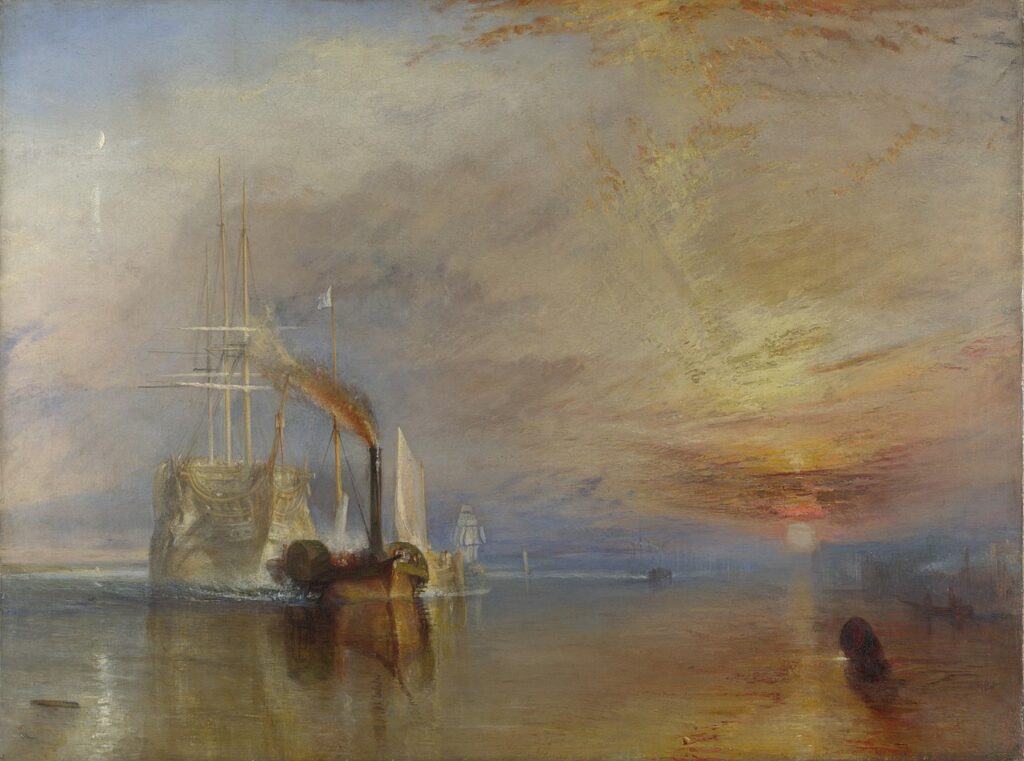
The Fighting Temeraire by J M W Turner, 1839. National Gallery, London. Image: Public Domain.
Turner’s work became increasingly more abstract in its handling of paint, techniques which later on, were taken up by the Impressionists. The Fighting Temeraire (1839) excels in the handling of light and colour and the message it conveys. “He seems to paint with tinted steam so evanescent and so airy”, as one commentator put it. Turner never married and lived a frugal existence, despite his wealth. He became very reclusive as he got older and kept his private life to himself. He started to call himself Mr Booth to avoid recognition from strangers. Sophie Booth, one of his mistresses, provided the name.
Even though Constable and Turner had several contretemps at the Royal Academy, particularly disagreements about the hanging of their paintings in the annual exhibition, they admired each other’s talents. Although they were so very different in so many ways, both produced superlative work that remains part of the great pantheon of Western art.
Ed received a well-deserved round of applause, handled all the questions seamlessly and was the subject of much praise during the tea break. He has agreed to a return visit to SUES and we look forward to welcoming him back some time later this year.
Christine Vasey
What’s in a Name?
A recent article in the magazine of the Victorian Society has intrigued me and stimulated me to take action in the form of planning a series of urban walks in Southport and Ormskirk which I hope to carry out during the winter months. I am hoping to encourage you to take part as well. Let me explain.
The article is by Stefan Muthesius, a distinguished architectural historian and author of The English Terraced House – a fascinating analysis of the most common type of English House. In this article he considers house names, a custom that goes back to the early 19th century and is seen most frequently, not on individual houses, but on rows or groups of houses like Victoria Terrace or Rose Villas. Name plaques are not ‘tacked on’ to houses but built solidly into the walls, often high up on the first floor. Muthesius describes them as follows.
“All these plaques should be taken as quasi-public pronouncements, as conspicuous messages to be read by anybody passing, part and parcel of the new kind of residential suburban street.”
He and his friends have done a survey of over 5,000 named houses in 140-plus places in East Anglia, South-East England and the South Midlands. They have found surprisingly little repetition and have recorded 3,900 different names, 2,700 of which occur only once. Most plaques have two words – a ‘name’ word like Victoria or York and a ‘type’ word like House or Terrace. As for the names themselves, people, places and plants predominate but Muthesius’ list also includes more abstract names like Providence and Jubilee. The practice of naming houses seems to have reached a peak in late Victorian times but continues through the First World War at least.
You will have noticed that none of his listed names come from the North of England, which is why I think that it might interesting to find some local examples. Ormskirk and Burscough ought to fit the general pattern – both contain quite a lot of terraced houses – but I am intrigued by what might be found in Southport. There is, of course, plenty of late 19th and early 20th housing in the town, but detached and semi-detached houses predominate and the proportion of terraced housing is remarkably low. Do we get ‘built-in’ names on detached houses? Are semi-detached houses given a single name like Rose Villas? Or are house names less usual than in other parts of the country?
I simply don’t know but hope to find out and, like Muthesius, I am seeking help from friends like you. Any examples (addresses or pictures) would be gratefully received and surveys of a whole street would be particularly useful in reducing my mileage.
Street names themselves are also of interest and, as a new town developing in the second half of the 19th century, Southport’s names with that distinctive blue background on the signs reflect the period in which they were created.
If you would like to have your own ‘territory’ that would certainly be possible. If you would like a copy of the article, just send an email requesting this to me at rg.mitchell@btinternet.com.
To spark your interest, I am including a number of examples from Southport. I have deliberately not included addresses and you will notice that my captions have more questions than answers.
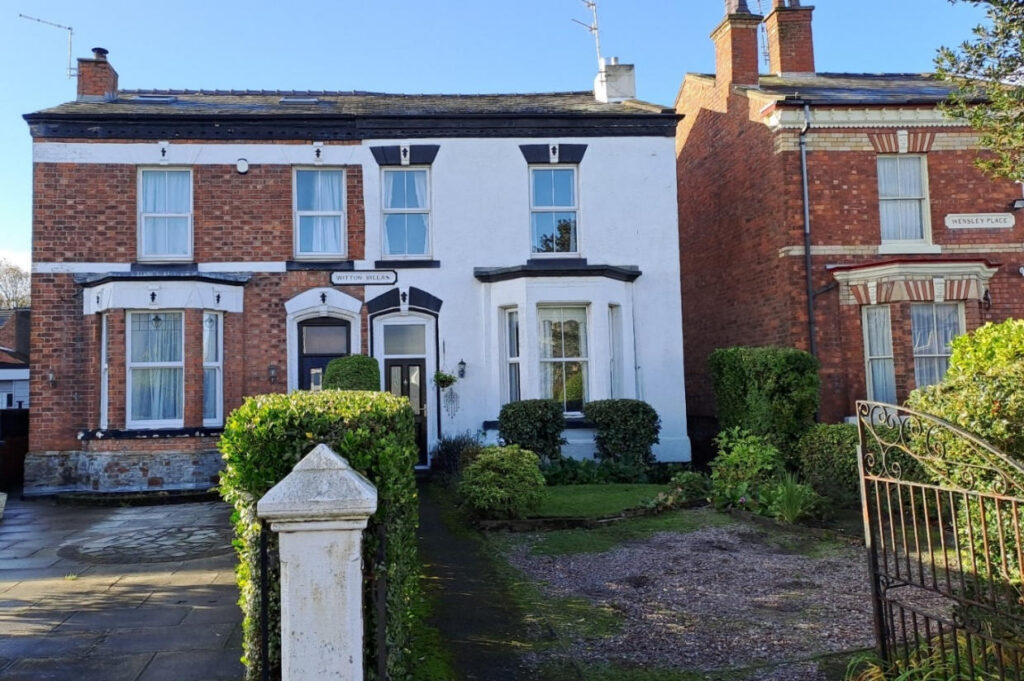
This is just about as good as it gets. Two name plaques in different styles on adjacent houses with both of them in the appropriate place over the front door. The details below show that the plaques are the same shape but the lettering is in different fonts.
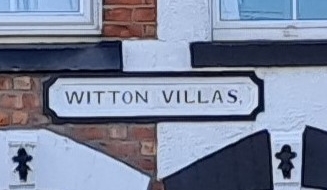
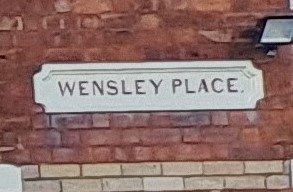
Here are three names. One of them is very appropriate for Southport, one has a strong whiff of Victorian evangelicalism about it and the third is (to me, at least) entirely meaningless. Notice that one of them has a date as well – a real bonus.
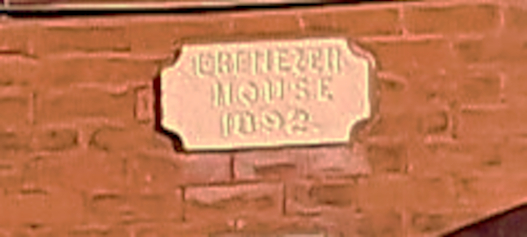
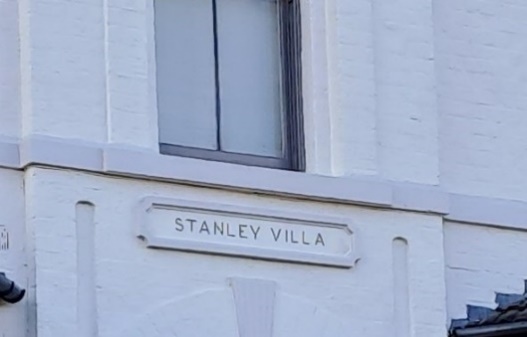
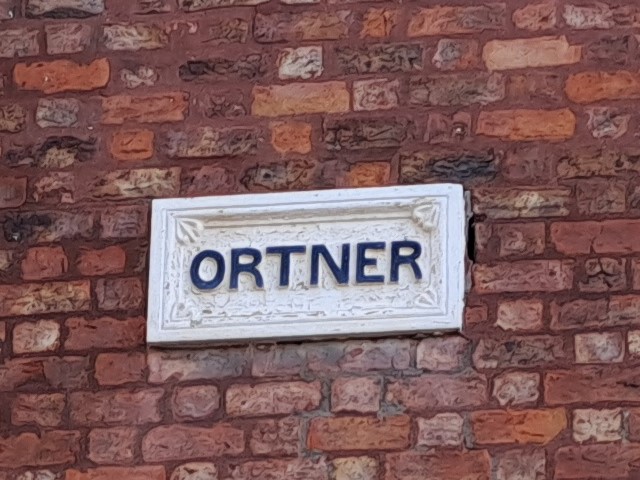
Because Southport has such a large number of large detached houses set in their own grounds and sometimes invisible from the road, it may be appropriate to consider another place where house names can be displayed. This is on the entrance gate. Wooden attachments are probably later and therefore not eligible, but the two examples below, using stone and terracotta, seem worth including in the survey.
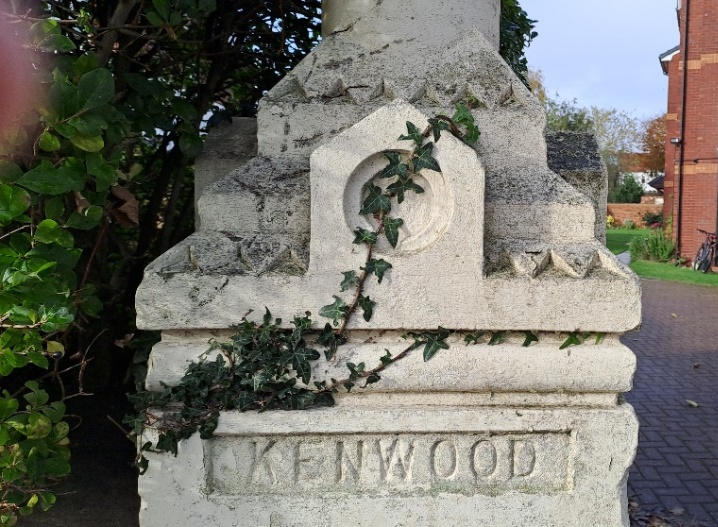
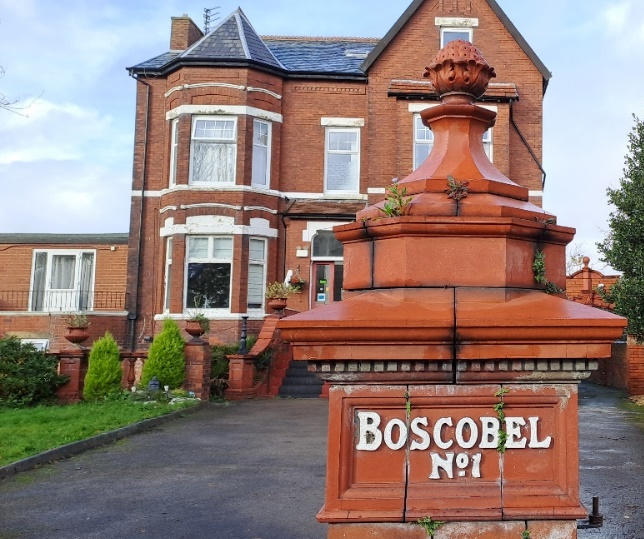
Roger Mitchell
A Family Christmas Tradition – Follow Up
Thanks to those of you who responded to my piece in Forum 49 about the song and rhyme traditionally performed at Christmas in my mother’s family.
I am particularly grateful to Pauline who, in response to my query about the meaning of “great black dumps”, thought to consult a dictionary. Now why didn’t I think of that?
Among the meanings given for “dump” are:
A kind of sweetmeat;
An article of confectionary, usually consisting wholly or principally of sugar; a sugar plum; a bon-bon.
I think this mystery may have been solved. Perhaps black dumps were humbugs, or something involving liquorice?
Chris Nelson
Contacts
Chair: Alan Potter
alanspotter@hotmail.com
07713 428670
Secretary: Roger Mitchell
rg.mitchell@btinternet.com
01695 423594 (Texts preferred to calls)
Membership Secretary: Rob Firth
suesmembers74@gmail.com
01704 535914
Forum Editor: Chris Nelson
chris@niddart.co.uk
07960 117719
Facebook: facebook.com/groups/southportues
See our archive for previous editions of the SUES Forum!